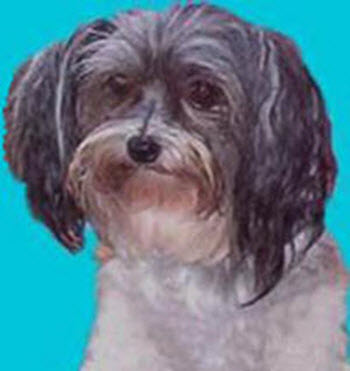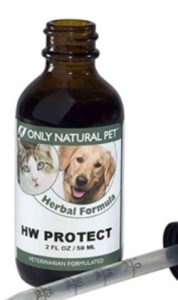Pet Loss Help
“Until one has loved an animal, a part of one’s soul remains unawakened” – Anatole France
Why do we feel this way when our pets die?
This post isn’t so much about telling you how to grieve. It’s more about sharing my experience of grieving for my sweet, loving little Poppie and to say that you don’t have to feel crushed by loss to honor your pet who has passed.

When a pet who has shared a large part of our life dies, we experience grief, which is one of the strongest of human emotions. Grief is a natural response to bereavement, but the emotions we feel can leave us feeling distraught and devastated.
How we understand and handle our emotions will determine whether the loss of our beloved companion will completely overwhelm us, or whether we will somehow find the ability to cope.
I found there were several steps in my grieving process, encompassing many emotional, mental and physical states. At times I thought I was going crazy with grief.
Some people struggle terribly whilst others are more accepting, particularly those among us who have nursed ill pets prior to their deaths.
Sadly, grief is not just a temporary state of mind – it is an entire process that has many variations, some of us recover quite quickly others among us done, in fact many people take the pain with them to their graves.
Here’s a list of some of the steps I encountered along the way of coming to terms with losing my best friend Poppie.
Shock and disbelief
Poppie had been a happy little dog when I dropped her off at our groomer’s salon and when I called to fetch her I was told she had had a bit of a turn and they had taken her to the vet.

Shock was my first reaction to the news of her death. When the vet told me she had died of a heart murmur I felt my knees buckle underneath me in total disbelief. When I look back on that very sad day I don’t know how I found the strength to drive home and in particular having to tell my dear old Mum that Poppie had gone to the Meadows and was waiting for us to cross the Bridge.
The Meadows and Rainbow Bridge are part of a mythical story of what happens to our pets when they die. The Meadows is where the sick and old dogs go to be healed. It is a warm cosy place for them to wait for us until we pass and then we cross the Bridge together.
It’s okay to cry!
At this point, we were unable to hold in the intense emotion that our darling Poppie had passed. We spent the rest of the day crying and nursing her.

Later in the early evening we buried her in our garden looking out over the water as she loved to do. Crying is normal; it is a perfectly natural release emotion and it happens to everyone – it’s okay to feel emotionally devastated.
When a pet passes away almost everyone feels an intense sense of loss and separation due to the fact that our loved one is no longer alive. Memories of the pleasure and friendship that we shared with our pet tend to pre-occupy our minds and nothing seems to give us comfort or solace.
Often people fear that they may be going “crazy” with grief, but again this is normal and all part of the healing and recovery process. Now is the time to reach out to our friends and family, it might not be easy but is important to keep trying.
Helplessness
When a pet passes away almost everyone feels an intense sense of loss and separation due to the fact that our loved one is no longer alive. Memories of the pleasure and friendship that we shared with our pet tend to pre-occupy our minds and nothing seems to give us comfort or solace.
Often people fear that they may be going “crazy” with grief, but again this is normal and all part of the healing and recovery process. Now is the time to reach out to our friends and family, it might not be easy but is important to keep trying.
Feeling lonely
Feeling low and lonely is all part of the grieving process.
These are particularly common symptoms with older people when their pet has been their sole companion for many years. However, many younger people leading busy lives still experience feeling low and lonely even when they have the support of family and friends.
A sense of guilt

When we have just lost our best friend, we often take on the blame for what has happened even when it was completely out of our control. I know because I did it when Poppie died of a sudden heart attack while being groomed.
She was actually running up and down the stairs and playing only minutes before I checked her in with the groomer – so many more self blaming thoughts which I still think of most days such as:
- Why did I take her to a professional groomer instead of doing her myself?
- If I only had been there! If I had stayed at the groomers with her would she still be alive today?
- If I had taken her to the vet more often would he have picked up her heart murmur was getting worse? Despite the fact that last time we saw our vet he said Poppie’s murmur was one she would die with, not because of.
Physical symptoms
The pressures of coping with bereavement whilst still coping with our daily lives may sometimes show up in our bodies as:
- tension
- headaches
- general aches and pains
- lack of energy or lethargy
Relief
Many of us closely involved with a pet that was ill for some time before its passing feel a sense of relief that their loved one is no longer suffering and in pain.
I remember this feeling vividly when Khan, our very old Shih Tzu (who my Mum and I used to affectionately call our “Old Man”) was so ill with cancer that our vet recommended his time had come to pass over.
After Khan passed our vet sent us a sympathy card with a poem which we found enormously comforting it is called The Last Battle. My mum and I still read this poem to find peace and solace when we think of Khan and Poppie and whenever one of our friends losses a pet we always share it – I hope you will too.
Recovering

As with losing a human family member it does help if we can share our memories with others by talking about the wonderful memories our pet leaves with us.
Some of us like to keep our pets close by and burry them our gardens and plant a pretty flower or shrub in their memory.
Others choose to have their pets cremated and their ashes put in an attractive urn to display and honour their pets.
How do our other pets cope?
It is important to remember that our other family pets may be affected too. Not only by the fact they too are missing their best friend but also, because our pets are incredibly sensitive at picking up on their family’s emotions.
With our support they too will recover and we need to be mindful of some of the signs and symptoms to look for which will tell us our other pets are grieving:
- they may seek out and stay in the favourite spot of their missing friend, patiently waiting for their return
- some animals search for days trying to find their friend
- they may become confused
- loss of appetite
- they may become lethargic or listless
Helping our family and friends through the grieving process
Many of us find it difficult to grieve in today’s busy society, but we can grow as human beings if we are able to grieve fully.

As supportive friends we can help our friends and family members start picking up the threads of enjoying life again by being:
- patient and non-judgmental
- aware that our friend or family member is gradually working their way through the normal grieving process
- caring, even if we don’t see it as such, our friend or family member has suffered a deep loss
- ready to listen when our friend or family member repeats the same old stories about their pet over and over again this is such a vital step towards their grieving recovery
When you’re ready, do consider welcoming another dog into your heart. There are so many wonderful but sad dogs sitting in shelters that are in need of homes.
Though it may not feel like it to begin with, there is room in your heart for a new canine love, and welcoming a new dog into your household in no way diminishes your love for your departed friend, in fact, I think it’s a rather wonderful tribute.
Loss of a pet poems
Rainbow Bridge
Just this side of heaven is a place called Rainbow Bridge.
When an animal dies who has been especially close to someone here, that pet
goes to Rainbow Bridge. There are meadows and hills for all of our special
friends so they can run and play together. There is plenty of food, water and
sunshine, and our friends are warm and comfortable.
All the animals who had been ill and old are restored to health and vigor those
who were hurt or maimed are made whole and strong again, just as we remember
them in our dreams of days and times gone by. The animals are happy and
content, except for one small thing; they each miss someone very special to
them, who had to be left behind.
They all run and play together, but the day comes when one suddenly stops and
into the distance. His bright eyes are intent; his eager body quivers.
Suddenly he begins to run from the group, flying over the green grass, his
legs carrying him faster and faster.
You have been spotted, and when you and your special friend finally meet, you
cling together in joyous reunion, never to be parted again. The happy kisses
rain upon your face; your hands again caress the beloved head, and you look
more into the trusting eyes of your pet, so long gone from your life but
never absent from your heart.
Then you cross Rainbow Bridge together
Author unknown
The Last Battle

If it should be that I grow frail and weak
And pain should keep me from my sleep
will you do what must be done
For this — the last battle — can’t be won
You will be sad I understand
But don’t let grief then stay your hand
For on this day, more than the rest
Your love and friendship must stand the test
We have had so many happy years
You wouldn’t want me to suffer so
When the time comes, please, let me go
Take me to where to my needs they’ll tend
Only, stay with me till the end
And hold me firm and speak to me
Until my eyes no longer see
I know in time you will agree It is a kindness you do to me Although my tail its last has waved From pain and suffering I have been saved
Don’t grieve that it must be you
has to decide this thing to do
We’ve been so close — we two — these years
Don’t let your heart hold any tears
Author Unknown
Treasured Friend

I lost a treasured friend today
The little dog who used to lay
Her gentle head upon my knee
And shared her silent thoughts with me
She’ll come no longer to my call
Retrieve no more her favourite ball
A voice far greater than my own
Has called her to his golden throne
Although my eyes are filled with tears
I thank him for the happy years
He let her spend down here with me
And for her love and loyalty
When it is time for me to go
And join her there, this much I know
I shall not fear the transient dark
For she will greet me with a bark
Author unknown
I only wanted you
They say memories are golden
well maybe that is true
I never wanted memories
I only wanted you
A million times I needed you
a million times I cried
If love alone could have saved you
you never would have died
In life I loved you dearly
In death I love you still
In my heart you hold a place
no one could ever fill
If tears could build a stairway
and heartache make a lane
I’d walk the path to heaven
and bring you back again
Our family chain is broken
and nothing seems the same
But as God calls us one by one
the chain will link again
Author – Vicky Holder
Please feel free to post memorials for your own pets or tips to cope with grieving in the comments below.
This article and information forms part of the Carole’s Doggie World Holistic Library and is presented for informational purposes only. The information is not intended to be a substitute for visits to your local vet. Instead, the content offers the reader information researched and written by Carole Curtis for www.carolesdoggieworld.com







 ‘Our “pet-free” lives have been shattered – with the appearance of a rescue dog. We became foster parents and took in a little hound. We took her from a life of hell in the summer heat to a new home with doting “dog people”….and during that week, we became members of the “dog people” club.’
‘Our “pet-free” lives have been shattered – with the appearance of a rescue dog. We became foster parents and took in a little hound. We took her from a life of hell in the summer heat to a new home with doting “dog people”….and during that week, we became members of the “dog people” club.’ Few things fill our hearts with joy like pets, but there is a flipside to this – we worry about the furry members of our family just as much as we do our own children.
Few things fill our hearts with joy like pets, but there is a flipside to this – we worry about the furry members of our family just as much as we do our own children.








